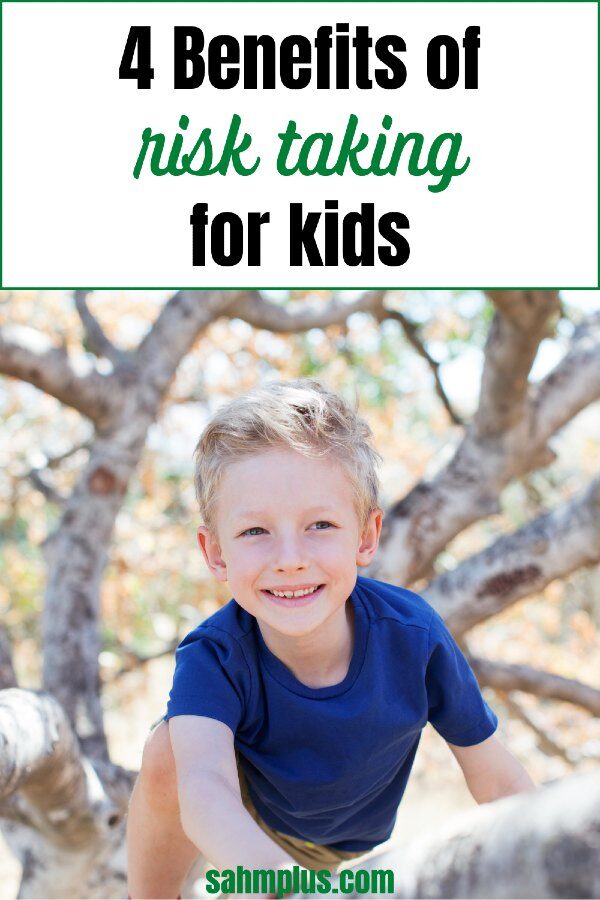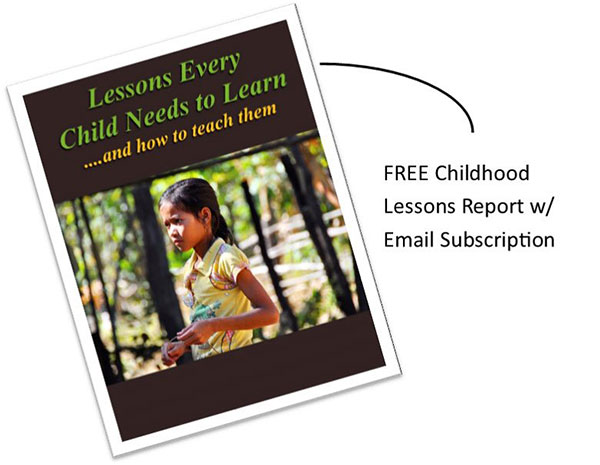Not only are there benefits to taking risks, there are dangers from not allowing our kids to take a few. Discover these secrets to raising kids to take risks.
“Parenting doesn’t come with a manual, just follow your heart.” We’ve all heard these words from a fellow parent or friend. But is taking risks part of the equation? Who would want to put their children in harm’s way?
Risk-taking and raising kids may not seem like a match made in heaven, and I needed to figure out how to merge these two factors over a long time. I mean, the thought of either of my toddlers rough housing (and getting hurt) was daunting. I would rather lay out a cushioned play mat and watch them closely.
However, with experience, I learned the benefits of risk taking for kids, and I am a firm believer. In fact, now I prefer encouraging my kiddos to take a few risks.
So, if you’re hesitant to let your babies venture into new growth spaces, you’ve come to the right place. I will highlight the benefits of risk-taking for kids and guide you as you find your footing. Don’t worry; it’s not as scary as you might think.

How Risk Taking Benefits Kids
According to Helen Little’s research, 87% of parents believe risk-taking benefits child development. Raising kids to take risks instils confidence, self-awareness, and skill development, lowering the risk of your baby engaging in harmful behavior.
Kids learn risk management from a young age, and eventually, they’ll become responsible teenagers and adults. Wouldn’t you love that?
Below is a detailed explanation of how risk-taking will benefit your baby.
- It builds confidence: Fear of failure keeps many people from taking risks. However, you’ll become less fearful when you take a risk, whether you succeed or fail. Your confidence continues to grow as you overcome multiple setbacks. The same applies to children. When your baby takes a risk, they’ll become more sure of themselves and unafraid to try new things. Furthermore, developing self-confidence at an early age solidifies the foundation for a confident adult.
- Gives learning opportunities: Yes! Risk-taking allows you to learn about yourself, test limits, and acquire knowledge or skills. You learn to outgrow your comfort zone and live a spontaneous life. So why not implement the same for your kids? Kids learn their likes and dislikes and develop confidence through taking risks like riding a bike, leading school activities, or joining the gymnastics team.
- Offers a sense of accomplishment: Every time you try something new or scary, there’s a sense of accomplishment. It is fulfilling to know you tried something different, whether you fail or succeed. You’ll notice kids getting overly excited and eager to try new things when they complete a task. That sense of accomplishment encourages them to explore new activities fearlessly.
- Encourages skill development: We’re all born with unique talents, but they’ll go unnoticed if we don’t explore them. Risk-taking allows your kids to identify and improve their talents early. Furthermore, they develop new skills through risk-taking, which builds esteem and encourages hard work. Kids learn the importance of working hard to become successful despite the risks.
Dangers of Not Allowing Your Kids to Take Risks
It is easier for parents to become risk-averse, especially when the kids are younger. However, the urge to protect your baby from potential harm could do more harm than good in the long run.
The dangers of not allowing your kids to take risks include limited physical mobility, low self-esteem, and complacency. In addition, non-risk-taking kids are more likely to develop phobias that stifle their emotional and social growth, leading to low self-confidence and poor performance.
I’m sure you know at least one adult who fears heights, insects, large water masses, or crowds. Where is the origin of such fears? It all begins in childhood when parents set strict boundaries, focusing on the negative effects of risky play and shielding their babies.
Poor problem-solving skills are another adverse danger of not allowing your kids to take risks. When faced with challenges at a young age, risk-taking kids are more likely to find their way around these problems with minimal adult intervention. However, guarded kids require more supervision, and decision-making isn’t their strongest trait.
So, as your kids grow, take small risks like assigning challenging chores, exploring new talents, and encouraging unsupervised play. In fact, child development experts encourage risky play for physical and psychological development.
Letting go of the need to manage risk may seem daunting, but it outweighs the dangers of not allowing your kids to take risks. Furthermore, various activities encourage positive risk-taking.
Examples of Positive Risk Taking
Although risk-taking benefits the kids, the idea of exposing your kids to potential danger isn’t encouraging. Therefore, it’s only fair to create a safe environment for risks by identifying positive risk-taking activities for your kids.
Here are a few examples of healthy risk-taking from a somewhat experienced mom.
- Assigning simple house chores with minimal supervision offers more than a bonding opportunity. In addition, House chores are beneficial for developing motor skills, instilling responsibility, and teaching time management.
- Encourage the kids to engage in challenging physical activities, such as biking, horse riding, hiking, rock climbing, martial arts, or roller coasters. These activities are fun and will encourage your baby to overcome the fear of heights, falling, and failure. Moreover, a sense of accomplishment comes with becoming a pro at a challenging activity.
- Leadership roles are excellent for instilling self-confidence, responsibility, and social skills. Therefore, ask your baby to run for a leadership role in the school. Of course, there’s a chance they won’t succeed, but it’s an opportunity for them to build confidence and improve their social skills.
- Enroll your kids in a school club, playgroups, or volunteering clubs where they’ll meet new faces. Emotional and social skills are developed through one-on-one engagements and meeting people from different walks of life. It is even better to start them off early because they’ll learn interpersonal skills, communication, and conflict resolution. Creating relationships will be the least of their worries as they grow up.
- Lastly, schedule family activities where you can all try new activities. You don’t have to micro-manage the outing and limit movement. Instead, encourage risky play and let the kids choose their preferred activities. This encourages independent thinking and confidence.
3 Tips for Teaching Children to Take Risks
Are you ready to expose your kids to positive risk-taking? Or are you still unsure? Well, don’t fret; you’re not alone.
It is normal for parents to feel hesitant about risk exposure with minimal intervention. In fact, I had to ease into letting my kids engage in risky play when they were younger. So, believe me, I understand.
And with that in mind, I have curated 5 essential tips to guide you as you teach your kids how to take risks. Here goes;
Participate in the Activities
Your kids need to ease into risk-taking. Therefore, join them in these risky adventures before leaving them to their own devices. Seeing you participate assures them that the activities are safe.
For example, when your kid sees you riding a bike, they’re less likely to feel scared about falling. Similarly, enjoy the swing with them or help them climb a tree in the backyard. You can step away once they understand the basics.
Be Encouraging
It would be best if you were more encouraging and less stern when exposing your children to new risks. Don’t lecture or force them into these activities unless they’re truly open to it.
The best approach is to encourage them and explain the benefits of stepping outside their comfort zone. For example, tell them why running for a leadership role is a great idea or how joining the football club will improve their social life. Truthful conversations about the importance of actions and consequences are encouraging at any age.
Alternatively, feel free to pull the plug and ask them to try when they’re ready. In addition, don’t make the child feel like a failure for not succeeding immediately. When a kid feels supported, they become confident in their abilities.
Introduce Unstructured Play
You can introduce risks indirectly. Sometimes, simple actions like unstructured play encourage your kids to take risks. For example, provide opportunities for them to build with Legos, play with blocks, complete puzzles, or paint.
Unknowingly, the kids will develop creativity, problem-solving, and critical thinking skills. These skills will become handy when faced with serious risks like horse riding or leading a group presentation. Generally, unstructured play is a slow build-up to risky challenges.
There you have it! Risk-taking might seem scary, but it’s really not. Moreover, your baby gets exposed to amazing benefits that only improve as they get older. So, don’t be shy to take the plunge into positive risk-taking. After all, all you need is an open mind and a willing spirit.
If you enjoyed this, sign up for our email newsletter here. You’ll gain access to a detailed resource section of free downloads, including Summer Journals, House Rules, and more.. Join the community and enjoy full parenting support.


5 comments
my son is 5 years old i want him to learn many skills of life and self development, but we can’t be with them forever so let’s train him to stay away from unsafe things
The information is very special, I will have to follow you, the information you bring is very real, reflecting correctly and objectively, it is very useful for society to grow together.
A parenting essay is a piece of writing about parents and the roles they play in the lives of their children. It discusses the importance of parents and what they do to make their children happy. Some of the topics covered in a parenting essay include:
Actually, we should let the kids try some dangerous things. Thus, he gains confidence in himself.
We worry too much about children sometimes. That’s why the child’s self-confidence may not develop. Sometimes you have to be brave.
Comments are closed.